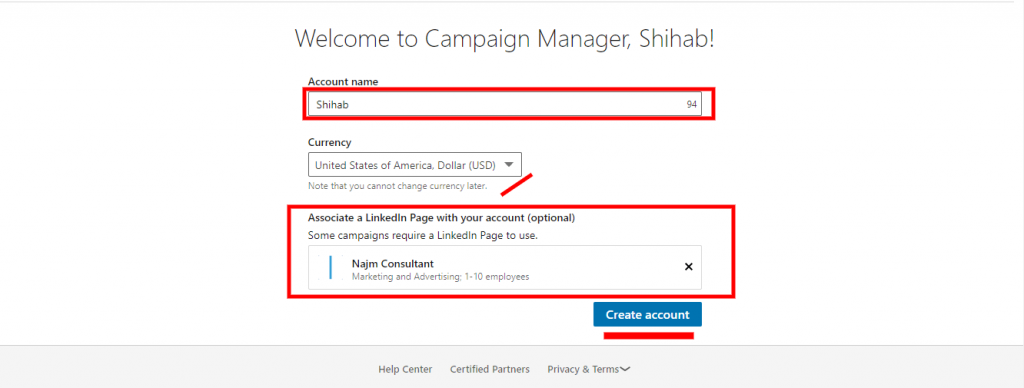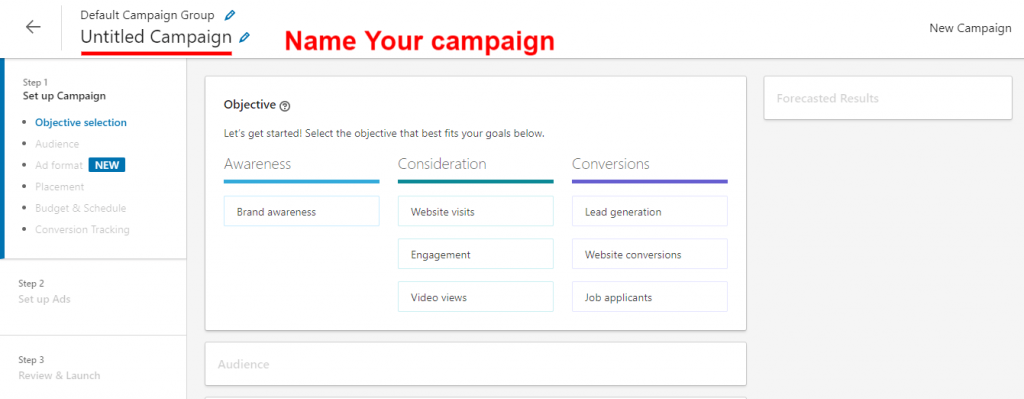If you are thinking of a new channel for advertising your business, LinkedIn can be under your consideration. The huge number of users using the professional network and features can help you in raising awareness of your brand, bringing in leads or converting leads to sales.
This blog is a beginners’ guide on how to advertise on LinkedIn. You will be provided with steps on setting up Campaign Manager, deciding the parameters for your ads, creating the ad itself and how to measure ad performance.
Are LinkedIn Ads effective?
The short answer is, “Yes!” Advertising on LinkedIn is undoubtedly very effective. There are nearly 660 million users on this network.
Also, as it is a site for professionals, your ads are going to reach important decision-makers. LinkedIn is considered the top advertising platform by B2B marketers.
Moreover, LinkedIn provides features such as Audience Targeting which can help your ads reach your target customers as specific as possible. It’s a step-by-step process also helps you create an ad very easily.
If you are struggling with your Ads and Funnel setup for your business, I recommend you go to a Digital Marketing Consultant and setup your funnel for upcoming audiences and engaging visitors.
Even experts agree with LinkedIn’s effectiveness
If you are still not convinced about why you should not advertise on LinkedIn, experts’ opinions can change that. Many marketing experts have recommended advertising on LinkedIn due to its unique features, diverse options, and easy process.
- Alan Santillan, marketing specialist at G2 Crowd believes LinkedIn advertising is effective as it appears authentic to the audience: “With so many connections promoting their business on LinkedIn day to day, a regular software advertisement that is promoting a social event, webinar, or product, can look fairly organic and non-spammy.”
- Brian Byer, VP of Content and Commerce at Blue Fountain Media finds LinkedIn’s Audience Target feature unique among all other social media platforms as it allows a “targeted audience broken down by some pretty unique and powerful data points like education, skillset, employer and industry.”
- According to Neil Patel: LinkedIn is an amazing advertising platform to utilize if you want to get your web site in front of a B2B audience.
Getting started- setting up Campaign Manager
To start your first ad on LinkedIn, you need to set up a Campaign Manager at first. Here are the few steps you need to do to set up Campaign Manager and set up your ads:
- Step-1: Go to LinkedIn Marketing Solutions

- Step-2: Click on the ‘Create Ad’ box on the top right

- Step-3: You will be directed to create a LinkedIn Campaign Manager account. Enter Account Name, the currency you want to transact for ads and the name of your company’s LinkedIn Page.
- Step-4: You will then land on the Campaign Manager dashboard. Provide your billing information.
- Step-5: Click on the “Create Campaign” to start creating your first LinkedIn Ad

Deciding your ad objective
After setting up the campaign manager, you need to set the objective for your ads. This step is very important as it helps you decide the ad format which you will use, the budget and the content of the ad.

When creating an ad for LinkedIn, you will be provided with the option to choose from the following seven objectives:
- Brand Awareness: Increase your reach and get more followers to your page
- Website Visits: Promote a new blog post, an offering or signing up for a free trial
- Engagement: Encourage users to follow, comment and share your content
- Video views: Raise views and engagement of your business’s video content
- Lead Generation: Sign up prospects to an offer you are providing
- Website Conversions: Convert leads to sales in your website
- Job Applications: Find the best talent for your company
Targeting the ad audience
In the next step, you set your target audience. The more targeted your audience is (that is, the audience is more specified), the better your ROI will be.
Luckily, LinkedIn provides you with the right audience targeting options. It has a vast amount of information regarding users’ education, job experience, and skillsets. This huge collection can help you pinpoint your target audience.
With LinkedIn, you can target audience according to the following factors:
- Location: Where the audience is located, You can more specify the audience by adding cities. You can also use exclude feature to exclude from targeting a specific GEO audience.

- Language: Language(s) in which you would like the ad to appear

- Company: Name, size or industry of the company of the target audience

- Demographics: Age and gender of the target

- Education: Degree, the field of study and school attended

- Job experience: Job title, years of experience and skills possessed

- Interests: Groups joined by the target audience and their interests.

You can target the audience based on all or some of the factors. You can also include and exclude certain criteria as well.
As you list the factors, LinkedIn will display the reach of your planned ad on the right.
Deciding the ad format
Setting the ad objective will help you select the ad format. LinkedIn provides several ad formats:

These several ad formats can be categorized into two types:
- Sponsored Content: As simple as it sounds, Sponsored Contents are promotions of your content. Posts from your company’s LinkedIn page or website appears in the middle of a user’s Newsfeed. You can post blog posts, images, videos, carousel images, and even send event invitations through Sponsored Content.
- Text Ads: These ads appear on the right side, top of the newsfeed or below the “People You May Know” suggestions. True to its name, these ads only contain text. These ads have a lower cost per click than Sponsored Content.
- Sponsored InMail: Sponsored InMail is a personal message sent directly to the inbox of the target audience. It is mainly used by B2Bs for generating high-quality leads.
Bidding
After deciding the target audience, you need to set the budget, schedule, and place the bidding offer. Setting the budget and the duration of the ad schedule will depend entirely upon you. In bidding, choose the option that optimizes ad exposure and your ad budget.

There are two types of Bid Types in LinkedIn advertising:
- Cost per Click (CPC) bid: In this type of bidding, you are charged for every time a user clicks your ads.

- Cost per impression (CPM) bid: You are charged an amount each time 1000 users view your ads.

Creating an ad
Once you set the various parameters of your ad (objective, ad format, audience, and bidding), you can create your LinkedIn ad. LinkedIn will direct you on how to make one ad, how it will be displayed and how your various ads will rotate.
Basic Ad Guidelines
What you will write in your ad depends on the type of ad you have selected. However, there are some guidelines you must maintain while writing the copy of your ad:

- Concise Headlines: The headline must be no more than 70 characters (for Sponsored Content) and no more than 25 characters (for Text Ads).
- Short and clear description: The main copy of your ad should be under 150 (for Sponsored Content) and 75 characters (for Text Ads).
- Image: The image must help express the copy of your ad. For Text Ads, an eye-catching image can help you grab the attention of your audience who might otherwise ignore you.
- Landing page: Ensure that the URL that opens after a user clicks on the ad is accurate.
Measuring your ad performance
You have created your ad. You now must wait for LinkedIn to approve it.
After approval, you can check the performance of your ads. The LinkedIn Ads Dashboard helps you with it. But first, you need to install Insights Tag for measuring your ad performance.
#1 Insights Tag
Insights Tag is a Javascript tag that helps you track ad conversions and reveal audience demographics. The tracking done by Insights Tag is shown in the Ads Dashboard. Insights Tag also helps you retarget ads to the audience.
To install, go to the Account Assets Menu of your Campaign Manager page. There you will find Insights Tag.
#2 Ads Dashboard
The Ads Dashboard measures your ad performance. To view it, click the Campaign Performance Menu on your Campaign Manager page.
In the Ads Dashboard, you will find various performance metrics- impressions, views, conversions, CTRs, etc. You will also see charts displaying the results of your campaigns.
#3 Conversion Tracking
If you want to take your ad performance measurement a step further, LinkedIn Conversion Tracking is the right tool for you.
This tool helps you to measure the number of leads, downloads, purchases and other actions audiences take from your Sponsored Content or Text Ads campaigns.
Here’s how to start with conversion tracking:
- Step-1: Add Insights Tag on your company’s website
- Step-2: Go to Conversion Tracking from your Campaign Manager page.
- Step-3: Click on the Create New Conversion box and fill in the following:
- Name your Conversion
- Choose the type of conversion you want to- Lead, Sign up, Purchase, Add-to-cart, Download, Install, Key page view or Other
- Add value to measure the ROI (optional)
- Select the domain you want the conversion to apply to
- Set the webpages which will define the action
- Click Save
- Step-4: Add Conversion Action to either an existing or a new campaign.
To add conversion action to an existing campaign:
- Select the campaign you would like to add the action to
- Click the Settings button beside the campaign name and click on “Select Conversions.”
- Check the Conversion Actions you want to add to the campaign
To add conversion action to a new campaign:
- Select the Create New Campaign button
- Click “Select Conversions” from the Conversions option
- Check the Conversion Actions you want to add to the campaign
Best LinkedIn Ad Practices
You might agree that creating ads on LinkedIn is much easier than other platforms. Yet, there are certain cases where you might feel confused about which choices to make. Here are some best ad practices for you to advertise on LinkedIn:
- Create a buyer persona: Ad objective and ad audience are two unique features of LinkedIn advertising. The great number of options provided at these two stages of ad creations can be overwhelming. These two stages are nonetheless important as they set the tone for your ads. To avoid messing up at this stage, create a buyer persona beforehand. Creating a buyer persona will help you understand the needs of your customers. You can then create ads based on solving those needs. Moreover, the buyer persona will help you know which factors you need to use for Ad Audience.
- Selecting the right bid: Choosing between Cost per 1000 Impressions (CPM) and Cost Per Click (CPC) depends on your budget. With CPM, you are asking LinkedIn to give you more impressions. While with CPC, LinkedIn will determine the performance of your ad. If you are aiming for a long ad campaign, CPM might be the best choice for you. On the other hand, if you are aiming for quick results, CPC is the best.
- Selecting the best ad format: LinkedIn Marketing Solutions suggest marketers experiment with different ad formats to find the best ad format. To select the best ad format, it is best to understand what is your objective for the ad. For brand awareness, Sponsored Content and Text Ads work the best. Sponsored Content is also great for engagement with the audience. Also, these two ad formats work best when you want to increase website traffic. For lower costs, though, Text Ads are better. On the other hand, Sponsored InMail works best for highly qualified lead generation. Since it is a personal message to an audience, it is also costly.
Conclusion
Making and managing ads on LinkedIn is easier than most other social networks. Also, its user base means you can generate higher conversions here than in other media. So, start advertising on LinkedIn today!





